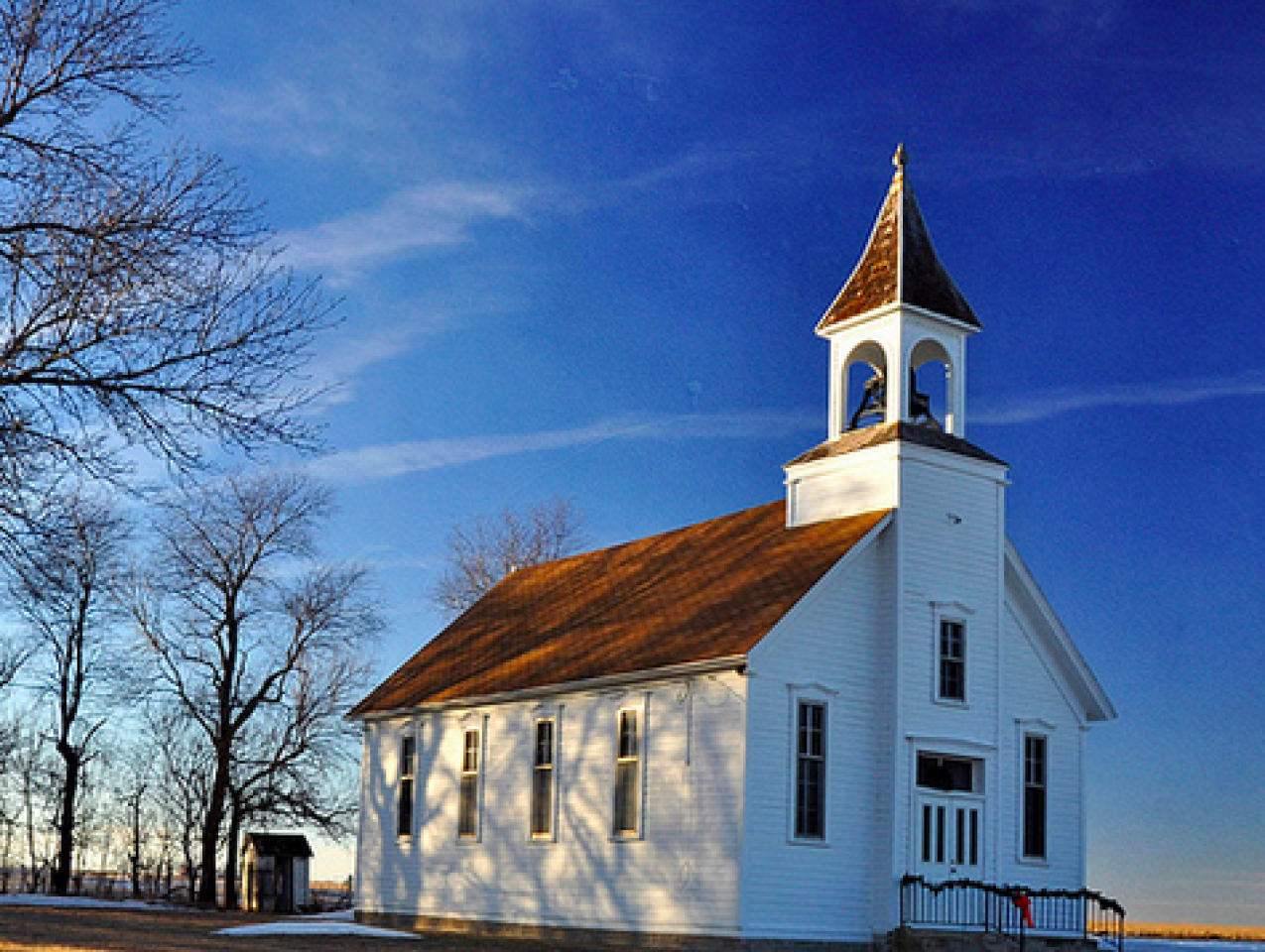After seven years of litigation, the Good News Community Church located in Gilbert, Arizona, and its Pastor, Clyde Reed, finally got their day in court, and not just any court. On January 12, 2015, the church’s case, Reed v. Town of Gilbert, was argued in the Supreme Court of the United States. The tiny church typically has only 25-30 adults and 4-10 children attend its weekly services, but it fought for its free speech rights like a giant.
The town of Gilbert has a complex municipal sign ordinance. The purposes of the ordinance are to “assure proper and efficient expression through visual communications involving signs compatible with the character and environment of the Town; and to enhance the visual environment of the Town.” The ordinance provides that one must obtain a permit to post a sign, but there are significant exceptions. Among the exceptions are:
- “Ideological Signs.” These are signs that communicate a message or ideas for noncommercial purposes. Such signs must be no greater than 20 square feet in area and 6 feet high. There are no limits on the length of time they can be displayed.
- “Political Signs.” These are signs that support candidates for office or urge action on other matters. Such signs may be up to 16 square feet in area on residential property; up to 32 square feet in size on nonresidential property; up to 6 feet high; and are not limited in number. They can be displayed four and a half months before an election and must be removed 15 days after an election.
- “Temporary Directional Signs Relating to a Qualifying Event.” These are signs that are not permanently attached to the ground, a wall, or a building, and are not permanent displays. They must be intended to direct people to any assembly, gathering, activity, or meeting sponsored by a religious, charitable, community service, or similar non-profit organization. These signs may be no greater than 6 feet high and 6 square feet in area; no more than four such signs may be displayed on a single property; and such signs may be displayed only 12 hours before, during, and 1 hour after the event.
Because the Good News Community Church does not have a permanent home, its religious services are held in different places and Pastor Reed deemed it necessary to post signs directing potential worshipers to the appropriate location. Town of Gilbert officials determined that the church’s signs were exempt from requiring a permit, but were subject to the limitations placed on “temporary directional signs.” The church erected signs and was cited for exceeding the time limits for displaying directional signs and for failing to include an event date on the signs. Pastor Reed’s request for treatment at least as favorable as that provided for “ideological” and “political” signs was denied by town officials.
In 2008, Pastor Reed and the church sought relief in a federal district court, claiming that the ordinance violated their Constitutional rights to free speech. The First Amendment provides, in part, “Congress shall make no law…abridging the freedom of speech….” This provision has been judicially extended to apply to state and local governments, not just the federal government. The District Court and the Court of Appeals for the Ninth Circuit applied an “intermediate scrutiny” standard and upheld the ordinance, reasoning that the restrictions on “temporary directional signs” were “content-neutral,” and not excessive.
The powerful words of the Free Speech Clause have long been the subject of judicial interpretation. For example, courts have reasoned that some speech, such as communicating a threat and perjury, is not afforded Constitutional protection. Jurisprudence has developed that classifies speech as “content-based” or “content-neutral.” The former is subject to “strict scrutiny” and the latter is subject to “intermediate scrutiny.”
Courts apply a “strict scrutiny” test when there is a deprivation of a Constitutional right or when the government takes action that adversely affects a “suspect class” such as a racial group. To pass the “strict scrutiny” test, the government must demonstrate a “compelling government interest,” the law must be “narrowly tailored” to achieve its goal, and the law must be the “least restrictive means” of achieving the goal. Applying the “strict scrutiny” test more frequently than not results in invalidating the law under consideration.
The “intermediate scrutiny” test is less restrictive than “strict scrutiny.” To meet the “intermediate scrutiny” test, it must be shown that the law being examined furthers an “important government interest in a manner that is substantially related to that interest.”
These tests are objective. The intent of the government is not the issue. In other words, in order to prevail, a person denied free speech need not show that the government was in bad faith or intended to abridge free speech.
The church claims that the sign ordinance is clearly “content-based” because “ideological” and “political signs” are treated more leniently than “temporary directional signs.” In the church’s view, this requires that the “strict scrutiny” standard must be applied. The Town of Gilbert contends that the ordinance is “content-neutral” and that it merits review under the “intermediate scrutiny” standard.
The Supreme Court has struggled with the issue of how much control governments can impose on free speech. It painted itself into a corner over the last seven decades by favoring “noncommercial speech” over “commercial speech” (e.g., a company advertising a product for sale). In a line of cases, it allowed the government to exercise more control over “commercial speech” than permitted over “noncommercial speech.” There is no coherent reason to differentiate speech in such terms. Fortunately, the signs in the case being considered have nothing to do with commercial activities or “commercial speech.”
The church said that for the town to prevail in this case, “Gilbert must explain why a 32 square foot sign displayed in the right-of-way virtually all year long is not a threat to safety and aesthetics if it bears a political message, but it is such a threat if it invites people to Good News’ church services.”
The church’s arguments are very persuasive. Furthermore, why should the church be required to erect its sign a mere 12 hours prior to the event and rush to remove it only one hour after the event? That appears to be punitive. Gilbert’s arguments are lame. It has no persuasive reasons for treating signs differently. It is difficult to take seriously that hundreds of large political signs are less a safety hazard than one small church sign.
During oral arguments at the Supreme Court, Justice Alito mused that a sign might pass muster if it said, “Come to our service on Sunday morning. We can’t tell you now where it will be because the town won’t let us, but if…you drive by here tomorrow morning at a certain time, you will see an arrow.”
The difficulty in deciding this case was not to determine which side prevails. The tough task for the Supreme Court was to craft words that will correctly decide the case and not create chaos for states and municipalities who genuinely want to protect free speech, but at the same time ensure safety and improve aesthetics.
The United States filed a brief in this case supporting the church, and urging the Court to use the “intermediate scrutiny” test. It claims that the ordinance fails the “intermediate scrutiny” test because Gilbert failed to show that the ordinance promotes safety and enhances aesthetics. The United States is interested in the case because the Court’s decision might affect billboard regulations promulgated under the federal Highway Beautification Act. The United States wants free speech, but it also wants beautiful highways. It is hard to argue with that.
The ordinance clearly reflects Gilbert’s view that ideological and political speech are more valuable than other speech, such as that of the church. It was fairly easy to predict that the church would win his case. The difficult task for the Supreme Court was to craft language that strikes the proper limitations that governments can place on free speech.
The Court announced its unanimous decision on June 18, 2015. The tiny church prevailed. The Court ruled that the ordinance’s provisions are “content-based” regulations of speech that do not survive “strict scrutiny.” It is important that six Justices reasoned that the “strict scrutiny” test applies and that Town of Gilbert did not demonstrate that the ordinance’s differentiation between “temporary directional signs” and other types of signs furthers a compelling governmental interest and is narrowly tailored to that end.
The majority opinion was authored by Justice Thomas. He wrote that the decision will not prevent governments from enacting effective sign laws. He emphasized that a government “may be able to forbid postings on public property, so long as it does so in an evenhanded, content-neutral manner.”
In an opinion concurring in the judgment, Justice Kagan wrote that the Town of Gilbert’s defense of its sign ordinance, especially the distinctions between directional signs and others, does not pass “strict scrutiny,” or “intermediate scrutiny,” or even the laugh test. She warned, however, that the Court should not have applied the “strict scrutiny” test. She fears that the test will be applied to every sign ordinance containing a subject-matter exemption. She predicts that as the challenges to them mount, courts will have to invalidate them even though they are reasonable. She predicted the Supreme Court might become a Supreme Board of Sign Review.
This case illustrates the Roberts Court’s fierce protection of free speech rights. It is unlikely that Justice Kagan’s prediction will come true. It is more likely that lower courts will use the plain language of the majority opinion to sort out disputes concerning the breadth of control governmental entities can use to limit free speech.
















